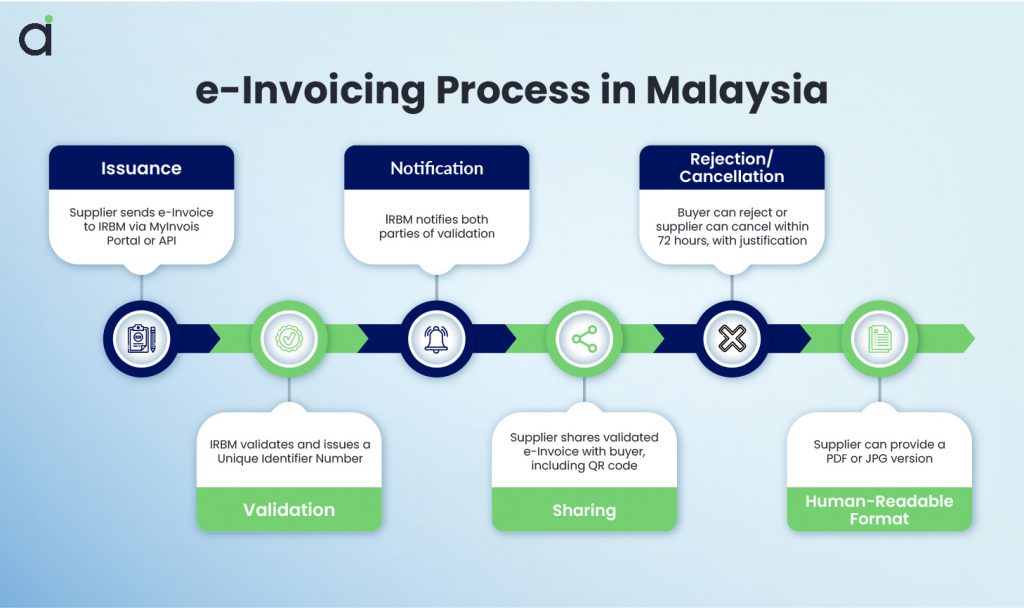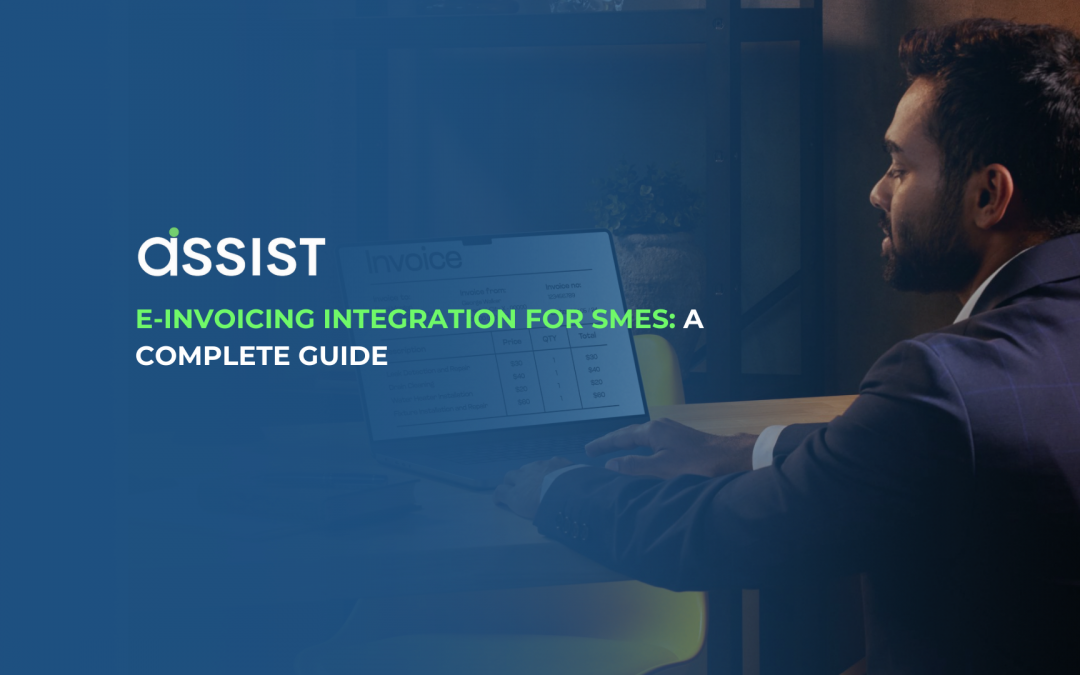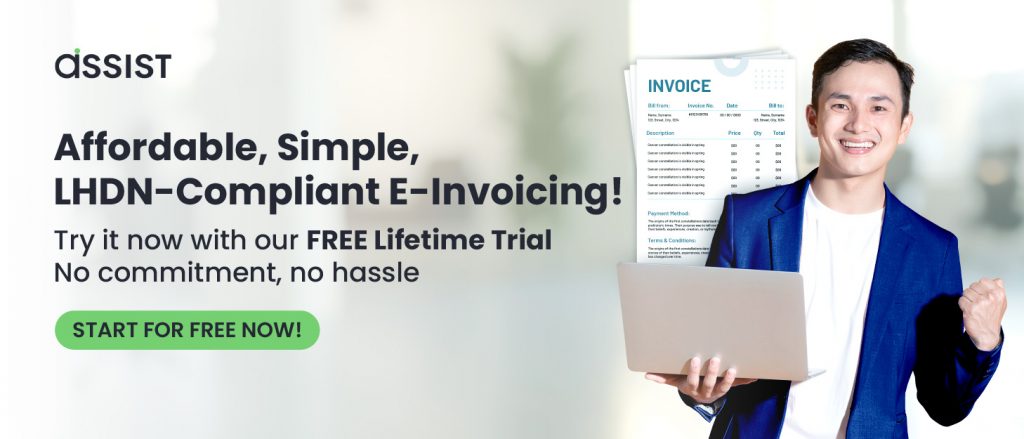The approaching 2025 e-invoicing mandate in Malaysia requires small and medium business(SMEs) owners to make hasty adjustments in their processes. E-invoicing integration for SMEs helps companies maintain compliance standards and improves their financial operations. This article demonstrates the logical path towards successful e-invoicing integration with your SME’s accounting system.
Understanding E-Invoicing
The electronic generation, storage, and transmission of structured invoices collectively form e-invoicing. The system decreases paper documentation while boosting precision along with tax conformity. Businesses need to adopt e-invoicing because the Malaysian government made it mandatory for businesses to fulfill regulatory needs.

Benefits of E-Invoicing Integration for SMEs
Before we tackle the integration steps, a simple introduction to the benefits is in order. E-invoicing has several advantages, including:
- Time Savings – Automation cuts short manual data entry, limiting errors and speeding up processing time.
Save Costs – Printing, storage, and postage become substantially less expensive.
Regulatory Compliance – Allows alignment with the Malaysian tax system and the avoidance of non-compliance penalties.
Fast Payments – Payment processing for digital invoices is speedier and yields better cash flow.
Better Accuracy of Data – Transmissions eliminate duplication of entries and thus minimize human errors.
Steps to Integrate E-Invoicing with Your Accounting System
1. Check Accounting Software
Firstly, check whether your accounting system can integrate with an e-invoicing system. Popular software like QuickBooks, Xero, and SQL Accounting do the job with built-in e-invoicing options. If the software lacks this feature, consider upgrading or using some third-party solutions.
2. Choose an E-Invoicing Solution
It is crucial to select the right e-invoicing provider. Look for solutions that adhere to Malaysia’s tax regulations. Automation, cloud storage, and good integration with your present system should be key qualities of the provider. Popular products come either through government-approved e-invoicing platforms or specialized fintech providers.
3. Set Up E-Invoicing Settings
Once a provider is selected, you will need to configure e-invoicing settings, linking the system to your accounting software, invoice templates, and tax codes. Ensure that such settings match your business needs and government requirements.
4. Auto-Generation of Invoices
Automation plays a significant role in e-invoicing. Enable auto-generation of invoices whenever a sale occurs. This minimizes human intervention and ensures correct documentation of all transactions. Also, set up reminders for unpaid invoices to maintain a steady cash flow.
5. Test the System
Before full implementation, test the integration with sample invoices. Verify that all data, including customer details, tax calculations, and payment terms, transfer accurately. Address any discrepancies before rolling out the system across your business operations.
6. Train Your Team
Your employees must understand how to use the new e-invoicing system efficiently. Conduct training sessions to familiarize them with automation features, error handling, and compliance requirements. A well-trained team ensures a smooth transition and minimizes disruptions.
7. Monitor and Optimize the System
Regularly review your e-invoicing process to identify any inefficiencies. Track key performance indicators such as invoice approval time, payment cycles, and error rates. If necessary, adjust system settings or upgrade to more advanced solutions to enhance efficiency.
Overcoming Common Challenges
Although beneficial to business processes, e-invoicing adoption requires overcoming some common hurdles. Here’s how to address them:
- System Compatibility Issues – Use software compatible with APIs to allow seamless data transitions.
Staff Resistance – Educate employees on the benefits of e-invoicing to encourage adoption.
Concerns Over Data Security – Encrypt sensitive financial data and store it in secure cloud backups.
Changes in Regulations – Stay updated on Malaysia’s tax rules to ensure continued compliance.
Conclusion
Integrating e-invoicing with your SME’s accounting system is a strategic move toward efficiency and compliance. By following the outlined steps, businesses can automate invoicing, reduce costs, and enhance financial accuracy. As the 2025 e-invoicing mandate approaches, early adoption will give SMEs a competitive edge. Now is the time to embrace digital transformation and ensure your business stays ahead in the evolving financial landscape.
💡 Transform Your Invoicing with Assist E-Invoice Software!
Fed up with invoicing mistakes, tax headaches, and slow payments? Assist E-Invoice Software is your easy-to-use, automated solution for faster, more accurate invoicing—compliant and affordable!
🚀 Why Assist?
💸 Affordable – Get powerful invoicing at a price that fits your budget.
✅ Effortless Automation – Eliminate manual errors and save time.
📈 Real-Time Compliance – Stay fully compliant with up-to-date tax regulations.
⚡ Faster Payments – Speed up your payment cycle and improve cash flow.
🌟 Take the stress out of invoicing and boost your business today!
Frequently Asked Questions (FAQ)
What is e-invoicing and why is it important for SMEs in Malaysia?
E-invoicing is the electronic creation, storage, and transmission of invoices. It’s mandatory in Malaysia by 2025 to ensure tax compliance and improve efficiency.
What are the key benefits of e-invoicing for SMEs?
- Time Savings: Reduces manual data entry.
- Cost Savings: Cuts down printing and postage costs.
- Regulatory Compliance: Helps comply with tax laws.
- Better Cash Flow: Speeds up payments.
- Accuracy: Minimizes errors.
How do I integrate e-invoicing with my accounting software?
- Check if your software supports e-invoicing.
- Choose a compatible provider.
- Set up settings, automate invoices, and test the system.
- Train your team.
What challenges might I face when integrating e-invoicing?
- System Compatibility: Ensure software supports e-invoicing APIs.
- Staff Resistance: Educate your team on its benefits.
- Data Security: Use encryption and secure storage.
- Regulatory Changes: Stay updated on tax laws.
What types of e-invoicing providers are available?
You can choose between government-approved platforms or fintech providers, as long as they comply with Malaysian tax rules.
How can I ensure smooth adoption of e-invoicing within my business?
To ensure smooth adoption, invest in proper training for your team, regularly monitor the system for any issues, and optimize the system to improve efficiency over time.


Recent Comments